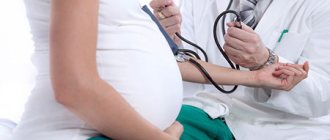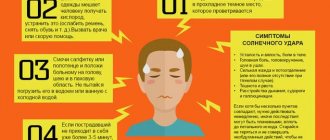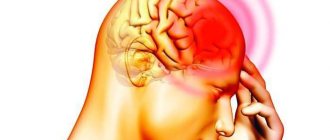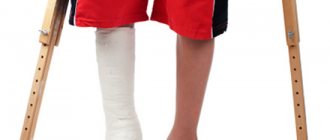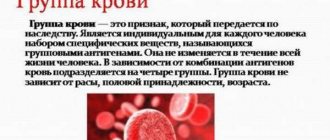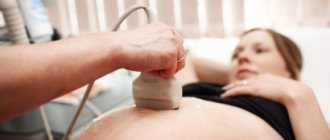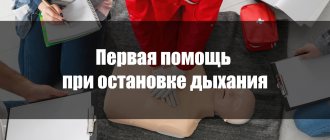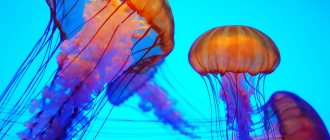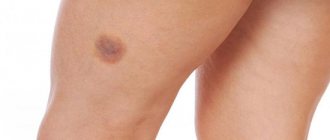What it is? A microstroke is the most common form of vascular disorders that causes problems in cerebral blood flow, occurring and manifested by local or cerebral neurological signs. It can go away on its own or as a result of drug treatment within 24 hours, without leaving behind any neurological symptoms, which is confirmed by instrumental diagnostic data.
It should be noted that “microstroke” as an independent disease is not registered in any medical registry. Doctors use this terminology to convey to the patient the seriousness of the problem. Since even a one-time manifestation is a special warning from the body about the possible development of full-scale vascular disorders.
In medicine, this pathology is called a symptom of transient (temporary) disturbances in cerebral blood flow - PNMK. According to statistics, almost half of the patients who have suffered temporary disturbances in cerebral blood flow constitute the main risk group in which a full-scale stroke (hemorrhagic or ischemic) may develop in the next three years.
It follows that this is a collective term, including the manifestation of three types of PNMK:
- development of transient (passing) ischemic attack;
- manifestation of hypertensive cerebral crisis;
- formation of hypertensive encephalopathy.
The trigger for the development of PNMK is acute oxygen starvation (hypoxia) of the brain. With this pathology, it lasts only a few minutes, after which the blood flow normalizes. A microstroke of the brain is considered a less dangerous condition than a stroke, and this is true, but even small amounts of damage to brain tissue are fraught with serious consequences.
Repeated attacks of PNMC are comparable to a full-blown stroke. Therefore, it is very important to promptly recognize the signs of a microstroke and begin treatment on time. It has been noted that microstrokes occur more often in women than in men; this can be explained by their special physiology - greater susceptibility to vascular pathologies and thrombosis.
In addition, the weaker sex is more emotional, susceptible to stress and anxiety, which affects health. And in women who smoke, are pregnant and take hormonal contraceptive pills, the risk of developing vascular pathologies increases many times over. And due to the rapid appearance and disappearance of the first signs of a microstroke, timely diagnosis of the disease is difficult.
What is a microstroke?
A microstroke is necrosis of brain tissue due to a blood clot or a sharp narrowing (ischemic) of a small vessel. Due to impaired blood supply, point lesions develop in the brain tissue. Since the pathological process affects very small areas of the structure, the disorders characteristic of a “classical” stroke do not occur.
A microstroke cannot be treated as a small stroke. This concept in medicine exists under the diagnosis of transient disorder of cerebral blood flow (TCI), which means problems with brain functions of vascular origin that arose suddenly and are accompanied by general cerebral or focal neurological symptoms (like a stroke), but go away independently or under the influence of treatment during the first 24 hours.
The mechanism of a microstroke is as follows:
- There is a sharp increase in pressure in the vessels of one of the parts of the brain, or the vessel is blocked by a blood clot.
- Normal blood circulation is disrupted, the cells of the affected area begin to experience a deficiency of oxygen and nutrients.
- This condition can last about six hours; if during this period blood circulation is restored to its previous volume, brain tissue can also be restored.
- If the pathological condition lasts longer, cells die, necrosis develops, and the area affected by the stroke becomes larger.
The main insidiousness of micro-strokes lies in the blurred clinical picture - the first signs of a micro-stroke appear later and more slowly, so the start of diagnostic and therapeutic measures is significantly delayed. And the later specialized treatment for cerebrovascular accidents is started, the worse the results and prognosis.
Terminology
A microstroke is necrosis of brain tissue that occurs due to a sharp narrowing of a small vessel. It is often confused with a transient ischemic attack (TIA), when the nutrition of the brain deteriorates, and this leads to the appearance of temporary symptoms of disorders of the central nervous system of the body. It must be said that the attack is always reversible and does not lead the brain tissue to necrosis. A microstroke is characterized by the fact that necrotic changes are minimal and the process is not completely irreversible. After this, the patient has a chance to recover and compensate.
How to determine a microstroke? Essentially, this is the same as a regular stroke, only the first one affects the small vessels of the central nervous system. Therefore, the deviation is not so noticeable, and the recovery period is significantly reduced. A micro-stroke is quite insidious, because the person has no idea what happened. Although the disease is the first warning, an alarm bell, in the future the real risk of a real stroke increases. The occurrence of a cerebral hemorrhage can only be determined after a pathological examination.
Causes
The list of phenomena that cause a micro-stroke is quite “standard” and applies to many diseases of the cardiovascular system:
- binge eating;
- obesity;
- alcohol abuse;
- sedentary work and constant physical inactivity;
- frequent overwork, stress;
- smoking;
- excessive physical activity;
- bad ecology;
- previous heart surgery (for example, valve replacement);
- excessive amounts of animal fats in the daily diet;
- constant cold climatic conditions (provoke an increase in blood pressure);
- a sharp change in the usual climatic and weather conditions.
Some diseases also provoke a microstroke:
- Uncompensated diabetes mellitus (with glucose fluctuations);
- Atherosclerosis in the progression stage (reduces the diameter of the lumen of blood vessels);
- Impairment of cerebral blood flow passing to the heart;
- Lesions of the heart valves of an infectious or rheumatic nature (contribute to their destruction);
- Congenital heart defects;
- Myocardial infarction is the cause of TIA, complicating its diagnosis;
- Arteritis (inflammatory process affecting the internal walls of blood vessels);
- Thrombosis;
- Arrhythmias - when the heartbeat is disturbed, microthrombi appear that clog the blood vessels of the brain (arrhythmia reduces blood pressure and impairs cerebral blood flow);
- Oncological problems;
- Hypertensive diseases with their vivid symptoms overshadow all signs of a microstroke;
- Apnea (stopping breathing during sleep for 10 seconds or more).
Risk factors
Risk factors include people with:
- constant nervous stress in professions that require increased attention;
- atherosclerotic damage to the vessels of the brain, carotid and vertebral arteries;
- heart diseases, especially accompanied by arrhythmias, valve defects;
- hypertension and symptomatic hypertension;
- diabetes mellitus;
- allergic vasculitis of an autoimmune nature;
- severe osteochondrosis, hernia in the cervical spine with compression of blood vessels;
- germinating tumor, hematogenous small metastases;
- skull injuries, concussion;
- congenital vascular pathology.
Symptoms of microstroke in adults
I would like to immediately note that in a microstroke, the symptoms directly depend on the location of the lesion and the caliber of the affected vessel feeding it. Simply put, the smaller the vessel, the less reliable the first symptoms of the disease.
With a microstroke, the symptoms are not always characterized by specificity. Many patients attribute them to changes in atmospheric pressure, weather changes, physical or psycho-emotional stress and chronic fatigue. The first signs of a microstroke are:
- dizziness;
- the appearance of “flies” before the eyes;
- headache of varying intensity;
- general weakness and malaise;
- nausea.
The main symptoms include:
- Numbness of the face and limbs;
- Dizziness and sudden intense headache;
- A sharp increase in blood pressure;
- Loss of coordination of movements, problems when walking or maintaining balance;
- Hypersensitivity to bright light and loud sounds.
There may also be additional symptoms:
- General weakness—feeling stunned, tired, drowsy;
- Possibly, but not necessarily, short-term loss of consciousness;
- Short-term visual impairment;
- Problems with speech, difficulty in pronunciation and understanding of speech.
A number of signs of a micro-stroke (asymmetry, visual impairment...) will depend on the affected area of the brain. If the left hemisphere is affected, the symptoms appear on the right side of the body. And vice versa.
Memory loss is one of the most obvious symptoms of a mini-stroke. It allows you to determine the severity of brain damage. If a person does not have a full-fledged ischemic or hemorrhagic stroke, then memory recovery occurs within 5-6 hours.
Causes of damage to small vessels of the brain
Fatigue and overstrain greatly affect the functioning of the brain, and more specifically, the blood flow in it. But these are only possible causes of the pathology. There are other more serious etiological factors that provoke irreversible micro-stroke - these are cardiovascular diseases and atherosclerosis.
Atherosclerosis is the first cause of brain damage due to microstroke. In addition, persistently elevated blood pressure, irregular heartbeat rhythms, and heart attacks also cause brain injuries.
How to recognize the first signs of a microstroke in a person?
The first signs and symptoms of a microstroke vary over a wide range, which depends on the diameter and location of the affected arterial vessel, as well as on the mechanism of development of the disorder (thromb, embolus, spasm, compression, disruption of autoregulation of cerebral circulation, etc.).
In some cases, a person may not even suspect that he has had a mini-stroke, for example, ordinary dizziness, headache, numbness and tingling in the arm for several seconds, blurred vision, muscle weakness can be signs of a transient ischemic attack.
The symptoms of a stroke and a microstroke are quite similar, but an attack of a microstroke lasts from 5 minutes to a day and is more mildly expressed.
It is important to know what indicative tests can be performed before contacting a doctor.
- Smile. If you ask the patient to smile, the asymmetry of the mouth will be noticeable - one corner will be lower.
- Speech - it is worth asking the patient to say a few simple phrases - for example, a proverb or a saying. Speech will be slower and unclear.
- Movement. You need to ask the patient to raise his arms or legs. If there are cerebral circulation disorders, one of the limbs will lag behind or not obey the owner at all.
Even if the patient exhibits only some of the symptoms of a microstroke listed above, it is necessary to urgently call an ambulance. Proper treatment within the first 24 hours significantly increases the chance of full recovery.
First aid
The rapid improvement in the condition of a microstroke should not mislead those present.
- Try to sit or lay in a comfortable position.
- Find out your relatives' phone number and call them.
- If possible, apply ice to your head.
- Unfasten your tight collar, tie, belt, belt.
- If vomiting, turn the victim's head to the side.
- Be sure to call an ambulance.
What is the difference between a stroke and a mini-stroke?
The main differences between a stroke and a microstroke (transient ischemic attack or TIA) are reflected in the International Classification of Diseases (ICD-10). If a stroke with persistent focal brain damage is classified as a disease of the circulatory system (I00-I99), then a microstroke - like other transient conditions leading to temporary brain hypoperfusion (insufficient blood supply) and cerebral ischemia (delays in blood flow) - is included in the class of diseases nervous system (G00-G99). Stroke is included in the block of cerebrovascular diseases with impaired cerebral blood supply (I64), and transient ischemic attack (G45.9), commonly called microstroke, belongs to the subclass of episodic and paroxysmal disorders (G40-G47). Such disorders appear suddenly, so there are virtually no precursors of a microstroke.
As experts note, TIA is characterized by a short manifestation of symptoms: from a few seconds/minutes to an hour. In the vast majority of cases, as practice shows, the attack lasts less than half an hour. The maximum duration of symptoms of a microstroke is still considered to be 24 hours, and if the symptoms do not go away during this time, a stroke is diagnosed. Experts from the American Stroke Association (ASA), considering TIA as an episode of focal ischemia, consider the degree of damage to brain tissue, rather than the time factor, to be the main factor. This diagnostic criterion was introduced relatively recently - when it became possible to study microstroke on MRI.
Many neurological consequences of a stroke - due to the formation of foci of necrosis of brain cells - are irreversible and make a person disabled, and with a micro-stroke, the symptoms quickly regress, and TIA does not lead to a fatal disruption of the metabolism of brain cells and their death. So permanent disability after a mini-stroke can only threaten with frequent repeated ischemic attacks. But doctors consider even a single such attack on the brain to be a prognostic sign of a full-blown ischemic stroke in the future.
Diagnostics
After you have experienced all the symptoms of a microstroke presented above, you should go to see a doctor, who will send you for an examination to determine the condition of the heart and blood vessels. Such studies include:
- Magnetic resonance diagnostics,
- CT scan,
- Angiography.
- Dopplerography.
- Echocardiogram.
- Electrocardiogram (ECG).
- Detailed blood test.
If symptoms of a microstroke appear, you must call a doctor: remember that these signs may also indicate a large-focal stroke or myocardial infarction. The main treatment will be aimed at the underlying disease. Sometimes a full examination is required (especially in young people) to find out what exactly caused the short-term circulatory disorder in the brain.
Treatment and recovery
Upon arrival of the victim at the hospital, the doctor prescribes a series of laboratory and x-ray tests to confirm the preliminary diagnosis. As a rule, a micro-stroke is detected on an MRI, where darkened areas of damaged brain tissue are clearly visible.
Medications
Further treatment regimen:
- means for improving blood microcirculation and metabolic processes in blood vessels (angioprotectors): Nimopidin, Tanakan, Bilobil;
- vasodilating medications: Instenon, Xanthinol nicotinate, Pentoxifylline;
- drugs to improve metabolism: Mexicor, Actovegin;
- agents to reduce the ability of red blood cells to form blood clots in blood vessels (antiplatelet agents): Ticlopidine, Aspirin, Dipyridamole;
- medications to improve brain activity (nootropics): Cinnarizine, Vinpocetine, Cerebrolysin, Piracetam.
- Vitamin supplements (kvadevit, dekamevit, corvitol) strengthen the body’s immune system and also help improve brain function. These drugs should be taken periodically, 1 volume, 2 - 3 times a day after meals, for 1 month, then you need to take a short break for 1 - 2 weeks, and resume taking them again.
It is necessary to treat a microstroke exclusively under the supervision of a medical specialist. Treatment at home consists of providing first aid until specialists arrive. The patient should be laid down, his head slightly raised, reassured, since panic only aggravates the course of the attack, and oxygen access should be ensured.
Rehabilitation after a mini-stroke
A patient’s recovery after a mini-stroke is best done at home. The minimum comprehensive non-drug rehabilitation program consists of:
- eliminating stressful situations;
- quitting smoking and drinking alcohol;
- diet therapy, nutrition correction, combating obesity;
- herbal medicine;
- physical therapy and massage, regular physical activity;
- physiotherapeutic procedures, water and heat therapy, climatotherapy;
- other non-traditional methods of treatment and rehabilitation (acupuncture, yoga, hirudotherapy, etc.).
After suffering a micro-stroke, patients are strictly prohibited from eating salty, fatty, spicy foods, which will only aggravate the general course of the disease. The diet of patients should be high-calorie, containing a large amount of vitamins (potassium and magnesium), necessary to normalize the functioning of the cardiovascular system.
Prognosis for recovery after a mini-stroke depends on its causes:
- If it is on the surface (excess weight, stress), then eliminating provocateurs will be the best prevention of relapses and complications;
- If the cause was a specific disease, a regimen for its treatment is developed.
Treatment
Treatment after a mini-stroke is long-term. It includes the following methods:
- Taking medications
- Surgical intervention
- Lifestyle changes (to avoid another attack).
Drug groups
After a diagnostic examination, the neurologist prescribes certain groups of drugs to the patient, for example:
- Vasodilators (Cavinton, Trental, Cinatropil, etc.) - improve cerebral circulation. The course of treatment is up to 3 months. The required dosage is determined by the attending physician
- Nootropic drugs (Piracetam, Vinpocetine, Phenotropil, Pantogam, Glycine, etc.) - with regular use, they restore memory and mental abilities. The course of treatment averages 2 months and involves both intravenous use of drugs and in the form of tablets
- Means for improving heart function (Asparkam, Digoxin, Verapamil, etc.) - restore cardiovascular activity and improve brain function, because they contain useful microelements. Course of treatment - 2 months
- Blood thinners (Aspirin, Cardiomagnyl, Thrombo ACC, Cardi ASA, Clexane, etc.) - prevent the formation of blood clots and are used to thin the blood. The course of treatment is determined by the doctor (therapy often lasts several months).
Operation
If drug treatment is ineffective, patients are prescribed surgery. In more rare cases, it is recommended immediately after a micro-stroke (for example, if the cause of the attack was atherosclerosis of the carotid artery, surgical removal of plaques is performed).
In other cases, the patient is recommended for the following types of operations:
- Stenting - a special structure is installed at the site of narrowing of the vessel, which creates the necessary lumen
- Angioplasty - a balloon is inserted into the narrowing site, then inflated and removed, which allows the walls of the vessel to be moved apart.
Both operations are performed under local anesthesia.
Lifestyle change
Drug and surgical treatment in combination give a good result, but in the absence of positive changes in lifestyle, it is unlikely to be possible to maintain health for a long time (and avoid a recurrent micro-stroke)
Therefore, during the recovery period it is extremely important to follow the following recommendations:
- Give up bad habits (addiction to alcohol, smoking, etc.).
- Reduce salt intake (maximum 1-2 tsp per day).
- Eliminate fatty foods from your diet (lard, smoked sausages, chips, fast food).
- Eat as many fresh vegetables and fruits as possible.
- Engage in physical activity (walking in the fresh air, light exercise).
- If possible, avoid stressful situations and get enough sleep (up to 8 hours a day).
Prevention
Methods for preventing microstroke at any age include:
- Controlling blood pressure is the most important preventative measure. The main cause of a mini-stroke is high blood pressure, or its sharp rise;
- Giving up bad habits helps to significantly reduce the risk of disease;
- Proper nutrition that does not contribute to obesity is also among the preventive measures;
- Constant moderate physical activity will help not only make the body strong and fit, but also maintain the health of the blood vessels in the brain;
- Reducing factors that cause stress and healthy sleep is another key to success in preventing micro-strokes.
A microstroke is a very dangerous disease that disrupts the functioning of the brain, causing unpleasant and life-making symptoms. The presented illness must be treated immediately so as not to expose your body to various complications.
Source: simptomy-i-lechenie.net
Preventive measures
The first stroke is the body's main warning. This is a signal that you need to carefully monitor your health. To minimize the possibility of developing another mini-stroke, you must follow the recommendations:
- It is necessary to check blood pressure, this is a prerequisite for prevention, because high blood pressure is considered the most common cause of mini-stroke.
- It is necessary to give up bad habits. Drinking alcoholic beverages after a stroke is contraindicated.
- Adjust your diet. The main thing is to prevent obesity; you should get rid of excess weight. A nutritionist and a neurologist will create a diet for you to follow.
- Where would we be without sports? Physical activity is encouraged in any direction. Exercising not only strengthens the body and spirit, but also improves brain performance.
- Adequate sleep and the ability to find a way out of stressful situations are important components of preventive measures.
In this material we talked about what a microstroke is, its consequences and treatment, as well as the causes of its occurrence and risk groups. We can conclude that despite the favorable prognosis, you should not delay seeking medical help. Self-medication is only suitable as first aid, there is no other way. After all, this is not only ineffective, but also dangerous. You need to know about the signs of a micro-stroke and methods of prevention. Perhaps in the future this knowledge will save someone's life.
Provoking factors
Before considering the causes of a microstroke, you should understand how a stroke differs from a microstroke.
| Ischemic stroke | Mini stroke | |
| Cause | Stoppage of blood flow due to a blood clot or formed atherosclerotic plaque. | Acute circulatory disorder due to vascular spasm. |
| Intensity of symptoms | As the pathological process develops, the symptoms gradually increase. | The intensity of the resulting violations is gradually decreasing. |
| Duration | Stroke symptoms persist for a long time and are eliminated with drug therapy. | After 3-4 hours, blood flow is restored and the person notices a gradual improvement in well-being. |
Brief ischemia causes the death of a small amount of brain tissue. With a single micro-stroke, a compensatory reaction leads to the fact that the functions of dead cells begin to be performed by similar structures, but if the provoking factors are not eliminated, then short ischemic disorders occur in other parts of the brain.
Let's look at what causes short-term ischemia:
- Arterial hypertension is one of the main provocateurs of pathology. During crises, vascular spasm occurs, which can cause a temporary cessation of blood flow.
- Uncontrolled diabetes. Sudden changes in glucose levels impede proper blood circulation.
- Increased blood viscosity. With a tendency to thrombosis, even minor vascular spasm provokes short-term ischemia.
- Obesity.
- Previous strokes and heart attacks.
- Bad habits (alcohol abuse, drug addiction, smoking) increase vascular tone.
- Hereditary predisposition. If blood relatives have a history of strokes, microstrokes or heart attacks, the risk of short-term cerebral ischemia increases.
Having considered what causes a micro-stroke, you should pay attention to your lifestyle. Perhaps the person himself provokes the onset of pathology: by not controlling his weight, by abusing tobacco or alcohol.
The first signs - be careful!
Among the typical first manifestations of a microstroke in women, the following signs are noted:
- The appearance of sudden severe migraines, sometimes accompanied by nausea and vomiting. Short-term attacks of pain in the head, even in women who are not prone to migraines and who previously did not know what they were.
- Pathological facial asymmetry (the most characteristic sign of a microstroke);
- Brief fainting;
- Stunned state and lack of response to the environment, disorientation in time and space;
- Signs of paresthesia, manifested by numbness of the limbs and unpleasant external sensations;
- Loss of sensitivity in the tongue, which leads to impaired pronunciation;
If a woman has doubts, she can determine a microstroke on her own by passing simple tests.
- Go to the mirror and smile - the smile will be crooked, and one of the corners of your mouth will remain motionless.
- Show your tongue to the mirror - it will deviate to one side.
- Try to stretch your arms out in front of you and hold them while closing your eyes - one arm will definitely “go” down.
- Slowly raise both arms up - one arm will usually lag behind.
- Try to repeat a long phrase or tongue twister without errors; if you have a ministroke, you will definitely notice unclear speech.
Sometimes typical signs of transient circulatory disorders may not appear, reminding of themselves only with minor, non-specific symptoms:
- a feeling of involuntary spinning of the body (signs of Vertigo);
- loss of strength and constant feeling of fatigue;
- diplopia (splitting of an object) and pinpoint flickering of “fly spots”;
- leaden heaviness and weakness in the limbs.
Such seemingly insignificant signs of a micro-stroke are often experienced by women on their legs. Unfortunately, most patients do not take them seriously enough, mistaking them for the consequences of overwork after a busy day at work. It is necessary to pay attention to the severity of such symptoms, especially if they have not previously appeared. You should not ignore them, this may be the first “bell”, a kind of warning of the development of an extensive process.
Main signs of short-term ischemia
As mentioned above, the signs of a microstroke are disguised as various conditions. A person develops:
- Muscle numbness. Numb hands, face or legs. Sometimes loss of sensitivity leads to the fact that a person cannot feel his limbs and cannot control his facial expressions. Weakness and numbness develop on one side of the body.
- Vestibular disorders. Patients find it difficult to navigate in space, cannot perform precise movements, and develop a “drunk” gait.
- Difficulty fixing gaze. It becomes difficult to fix both pupils on a particular object.
- Speech problems. The victim speaks unintelligibly, avoiding long sentences.
- Unreasonable headache. Suddenly your head begins to hurt, and the discomfort is intensified by bright light or loud sounds.
- Vomiting, bringing short-term relief and nausea.
- The appearance of a feeling of chilliness. The patient feels that he is freezing while in a warm room.
- The occurrence of a convulsive seizure (rare).
How to determine: a mini-stroke occurred or other unfavorable factors influenced it? It is almost impossible to do this at home, but if a person has 2 or more of the disorders described above, then it is necessary to call an ambulance. Symptoms associated with acute sensitivity disorders and vestibular disorders are especially dangerous.
What should you pay attention to?
In some cases, it is easier for outsiders to see the pathology than for the victim himself. How to determine a microstroke?
First, you need to monitor the other person's attentiveness. For example, he held an object tightly in his hand and dropped it. He cannot immediately orient himself and pick it up. Secondly, the patient behaves as if he is intoxicated. Attacks of hiccups are often observed. Thirdly, speech suffers greatly after a micro-stroke. The person with whom you were having a lively conversation suddenly falls silent, his speech becomes incoherent and meaningless. To achieve an adequate answer, you have to repeat and ask several times. In most cases, the patient does not react to treatment in any way; he is lost.
Symptoms depend on the mechanism of the disorder
The first signs of a microstroke will vary depending on the nature of the onset of ischemia. There are 3 forms of pathology development:
- cerebral hypertensive crisis;
- transient ischemic attack;
- acute hypertensive encephalopathy.
Cerebral hypertensive crisis
Hypertensive patients know well how a rise in blood pressure to high levels manifests itself:
- darkening of the eyes;
- headache;
- dizziness;
- nausea and vomiting;
- vestibular disorders.
But how do you know whether there was a normal rise in pressure or short-term ischemia? An indirect sign of a microstroke is that even after normalization of blood pressure, a person’s cerebral symptoms persist for a long time.
Transient ischemic attack
Let's look at how to recognize the development of a transient attack:
- ischemic symptoms are varied and depend on the affected part of the brain;
- signs develop at any pressure, even reduced;
- always accompanied by disorientation of the patient.
When a person begins to speak slurredly or suddenly falls silent, trying to focus his eyes, then this is a reason to suspect the development of an ischemic attack.
Acute hypertensive encephalopathy
The condition differs from a hypertensive crisis by the rapid increase in symptoms:
- migraine-like pain;
- vomit;
- temporary decrease or complete loss of vision;
- feeling dazed;
- slight decrease in sensitivity.
One way to find out whether hypertension or acute encephalopathy is to ask the patient to cough slightly or tilt his head to the side. When straining the neck or coughing, the symptoms increase sharply.
If help is not provided to the patient, cerebral edema develops.
The assistance provided to a person depends on how brain disorders occur and what symptoms develop.
Diagnostic methods
Depending on the patient’s condition, the diagnosis of a microstroke will vary slightly.
Acute ischemia
If a patient is brought to a medical institution during a deterioration in health associated with impaired cerebral blood flow, then he is given:
- Visual inspection. Deviations in speech, decreased sensitivity, and convulsive twitching are recorded.
- Measurement of basic indicators (pulse, temperature, pressure, respiration).
- CT or MRI , which allows you to determine the localization of the pathological focus and the nature of damage to the brain tissue.
- Dopplerography. It is considered an additional technique and gives a picture of the speed of blood flow and filling of blood vessels.
- ECG. Micro-strokes are accompanied by disturbances in heart rhythm.
- Biochemistry. Allows you to determine the possible cause of ischemia and carry out differential diagnosis.
- Examination by other specialists.
The diagnosis of microstroke is given to a patient only after excluding diseases that have similar symptoms:
- cervical osteochondrosis with pinched nerve root;
- meningitis;
- encephalitis;
- brain neoplasms.
Only after other pathologies have been excluded, the patient is diagnosed and, in addition to providing first aid, additional examination is carried out to identify the cause.
After all functions are restored
With the development of an ischemic disorder, the picture is visible to the doctor. How to diagnose a mini-stroke if it occurred a day or more ago?
First of all, the doctor asks the patient about his previous symptoms. The fact that a sudden deterioration in well-being went away on its own afterward indirectly indicates a micro-stroke.
MRI and CT are considered accurate diagnostic methods. Layer-by-layer scanning of brain tissue makes it possible to detect microfoci with dead cellular structures.
In this case, the person does not require emergency assistance. The patient is examined to identify the cause that provoked the pathological process.
What medications are prescribed
Drug therapy includes the following drugs for microstroke:
Important information: What kind of surgery is done after a cerebral stroke?
- Anticoagulants (Warfarin). The drug inhibits the activity of blood clotting factors. Treatment begins with the administration of minimal effective doses. If there is no result, the amount of administered substance is gradually increased until the prothrombin time increases. In case of hemorrhagic stroke, anticoagulants are contraindicated. When treating pregnant women, Warfarin is replaced with Heparin.
- Antiplatelet agents (Aspirin). The drugs eliminate pathological blood viscosity, dissolve blood clots and dilate blood vessels. Aspirin has minimal side effects. If you are intolerant to acetylsalicylic acid, use Dipyridamole. If microstroke occurs multiple times, Ticlopidine is prescribed.
- Drugs that reduce the load on nerve cells (Cerestat). Medicines normalize blood circulation and prevent damage to brain tissue.
- Thrombolytics (Alteplase). Medicines quickly dissolve blood clots, restoring blood supply to the brain. They must be administered in the first 6-12 hours after an attack. Drugs of this pharmacological group are contraindicated for hemorrhagic stroke.
Nootropics
Patients who have suffered a mini-stroke need to take medications that normalize metabolism and blood circulation in the brain. Nootropic medications for microstroke have the following effects:
- increase the amount of glucose penetrating the blood-brain barrier;
- normalize the production of nucleic acids in nerve cells;
- stimulate the synthesis of phospholipids;
- restore the activity of the central nervous system;
- prevent excessive increase in neuronal activity;
- reduce the need of nerve cells for oxygen, allowing the brain to function normally under hypoxic conditions.
Important information: How long do they live after a major ischemic (hemorrhagic) stroke of the right hemisphere of the brain (right side) and prognosis of the consequences?
For a microstroke, the following is prescribed:
- Nootropil. The drug improves memory and restores the innervation of muscle fibers. The course of treatment with this drug lasts at least 3 months.
- Encephabol. Contains pyridoxine, which has a pronounced anti-ischemic effect. The medicine is used in the subacute period of the disease. The therapeutic course lasts 1.5-3 months.
Medicines to normalize blood pressure
A microstroke in most cases is accompanied by a sharp rise in pressure. Taking antihypertensive drugs (Cordipine, Nifedipine) helps prevent the occurrence of dangerous consequences of an attack. These drugs are used from the first day of illness until blood pressure normalizes. Antihypertensive drugs have the following properties:
- remove excess fluid, preventing an increase in blood and intracranial pressure;
- protect blood vessels and heart muscle from damage;
- eliminate headaches caused by cerebral edema.
Start taking pills by administering minimal doses. If well tolerated, the dose is gradually increased to maintenance.
First Aid Basics
What to do if you have a mini-stroke? A person suddenly becomes inhibited, loses the thread of conversation, cannot walk normally, and this leads others into a state of panic. They begin to give the patient various drugs, try to give him something to drink, and do other unnecessary and sometimes dangerous actions.
It is important to remember that a microstroke in the acute phase is similar in symptoms to stroke, inflammation of the meninges and other dangerous conditions, so you need to act with caution. First of all, call a medical team.
While waiting for the arrival of doctors, to alleviate the condition of the victim, you are allowed to do the following:
- Make it more comfortable by placing a large pillow under your head and shoulders.
- Unbutton tight clothing, loosen belt and tie.
- Provide air flow by opening the windows in the room.
- Measure blood pressure. If there are signs of an increase, give a rapid-acting antihypertensive drug. Hypertensive patients carry medications to lower blood pressure with them.
- Apply ice or a cold compress to the back of the head to reduce swelling of the brain tissue.
- Calm the victim: the person is disoriented, does not understand well what is happening to him and begins to panic. It is allowed to give valerian or motherwort to drink.
Antispasmodics are strictly prohibited. They should not be given to relieve headaches. Competently provided first aid will reduce the intensity of symptoms.
Another common question is which doctor to see. The called ambulance will take the patient to the right specialist, and if the victim is independently delivered to the hospital, then you need to contact a neurologist and visit a vascular surgeon.
Micro stroke. How to distinguish it from a stroke? (Video)
First aid
What to do after a mini-stroke? The victim must be given first aid until the ambulance arrives. As noted, signs and symptoms may vary depending on the gender of the patient and the location of the lesion. An external examination will not yield any fruit; in any case, it is necessary to call an ambulance. The main goal of first aid is to stop damage to the central nervous system and reduce serious consequences to a minimum.
Let's look at the step-by-step instructions:
- The victim must be given absolute peace. The patient should be placed on high floors so that the head is raised thirty degrees.
- If you have uncomfortable and tight clothing, you need to take it off, and the room where the patient is located should be periodically ventilated.
- If a person has the urge to vomit, turn his head to the side so that the substances do not enter the body's respiratory system.
- If possible, you can take a hot bath for your feet; it is better to apply ice to the back of your head. One of the main goals is to calm the person; any sedative like valerian or hawthorn will do.
- It is not enough to simply ensure peace; you must constantly ensure that the victim does not make sudden movements or try to get up.
- In this situation, a light head massage will not hurt: it is recommended to make circular strokes from the temples to the back of the head, from the crown to the shoulder, then smoothly move to the knees.
Even if after some time the patient feels better, calling an ambulance should not be canceled under any circumstances. It is impossible to detect abnormalities in brain function at home. The victim will most likely be hospitalized, where they will undergo a thorough examination and make a diagnosis.
Possible consequences
Before we talk about possible disorders associated with short-term ischemic processes in the brain, we will answer frequently asked questions by patients:
- Is it possible to miss the signs of a mini-stroke? The answer will be positive if there was one attack of short-term ischemia, and it did not affect vital centers. A small number of dead cells will not have a negative impact on brain function, and doctors determine whether there was a microstroke by performing a CT scan.
- How many micro-strokes can a person have? A lot of. But each ischemic attack destroys a section of the brain structure and it is difficult for the body to compensate for the dysfunction, and the patient develops dementia.
- Does mini-stroke occur in children? The appearance of pathology does not depend on age; it can appear in a child, but is more often observed in middle-aged and elderly people.
Let's look at the dangers of a microstroke:
- Development of ischemic or hemorrhagic stroke. Stroke disorders immediately develop in 10% of patients and about 20% of the pathology is diagnosed within 3 months after suffering an attack of short-term ischemia.
- Decreased memory and difficulty concentrating.
- Emotional lability. A person is prone to sudden mood swings, showing irritability or aggression.
- Sexual dysfunction. Libido decreases, men have difficulty getting an erection;
- Unilateral paresis of the limbs.
- Decreased muscle strength.
A microstroke during pregnancy is dangerous for a woman due to the increased stress on the body associated with bearing a fetus. An ischemic attack develops in the later stages of gestation and to alleviate the condition of the expectant mother with normal fetal development, emergency delivery is performed.
Source: sosudyinfo.ru
People at risk of pathology
- People suffering from hypertension or angina pectoris.
- People who have relatives who have suffered a myocardial infarction or stroke.
- People whose blood vessels are predisposed to the formation of blood clots.
- Patients with diabetes mellitus due to a strong drop in blood glucose concentration.
- People with excess body weight.
- People with problems with blood flow to the brain.
Also, stress and sudden changes in weather can provoke prolonged vasospasm and subsequently cause a mini-stroke and stroke.
Diagnosis of microstroke
If a patient enters a neurology clinic in an acute period of cerebrovascular accident, doctors find many neurological symptoms that are minimally expressed during a microstroke. These include:
- headache;
- nausea and vomiting;
- instability and unsteadiness of gait;
- lack of coordination;
- motor and visual disorders;
- impaired sensitivity of one half of the body.
One day after the onset of the disease, neurological symptoms are not detected during a microstroke. How to check if there was a mini-stroke? Neurologists reconstruct the clinical picture of acute cerebrovascular accident based on a patient interview. Subsequently, the following diagnostic studies are carried out:
- inspection;
- examination of the biomechanics of the cervical spine (muscle tone, range of motion, position of the vertebrae at rest and in motion);
- X-ray of the cervical spine with functional tests;
- examination of the vessels of the neck and brain - Doppler ultrasound;
- magnetic resonance and computed tomography;
- angiography of cerebral vessels
- computed angiography of neck and brain vessels
- General and biochemical blood test and coagulogram.
For all studies, doctors at the Yusupov Hospital use modern equipment from leading companies in the world. Analyzes are performed using high-quality reagents to obtain accurate results.
Differential diagnosis of ischemic stroke and microstroke
How to recognize a stroke or micro-stroke in a person? Both diseases develop as a result of spasm or thrombosis of the cerebral artery. Symptoms depend on which vessel is affected - large or small. When blood flow through large cerebral arteries is disrupted, general and local disorders of neurological functions develop. Common symptoms of a stroke are:
- sudden sharp headache;
- nausea and vomiting;
- disturbance of consciousness;
- speech disorder;
- numbness of half the body.
Local manifestations of a stroke depend on which artery is affected by the blood flow. With a microstroke, there are almost never any general manifestations of vascular pathology of the brain. Patients are bothered by a moderate headache, stability and coordination of movements are impaired. They lose the ability to look at objects with both eyes for a while. All local symptoms of a microstroke can last from several hours to a day and go away on their own. If signs of cerebrovascular accident persist for more than 24 hours, this means that the patient has developed a stroke.
After an ischemic stroke, impairment of motor, visual, speech function and sensitivity persists. Patients who have suffered a mini-stroke do not notice any changes and often do not attach importance to the symptoms that existed. But in them, as after a stroke, foci of necrosis of the brain substance form. With repeated microstrokes, more and more of the brain is replaced by connective tissue. As a result, patients experience impaired brain activity and develop memory and concentration disorders.
Microstroke symptoms
To understand how to identify a microstroke, you need to know its signs. The disease is diagnosed in both women and men of different ages, and the symptoms of a microstroke do not have gender differences. In men 18-40 years old, the disease is detected more often than in women of the same age category.
A common symptom of a microstroke of the brain is intense headache, which is the first sign of the disease in women. The pain cannot be eliminated with analgesic drugs. It can occur several times a day, accompanied by dizziness and nausea.
The patient notes loss of strength, drowsiness, and apathy. Blood pressure increases, breathing quickens, and heart pain increases.
Gradually the condition worsens, which is expressed in characteristic symptoms. Many people are interested in how to find out that there has been a microstroke. This is indicated by improper coordination of movements resulting from damage to the smallest capillaries.
The person often falls and has problems moving. This symptom clearly indicates brain dysfunction. There is excessive sweating, chills, photophobia, and the patient is irritated by loud noises.
With elevated blood pressure, hyperemia of the skin on the face develops. Uncharacteristic signs of the disease include shortness of breath, decreased hearing, thirst, hiccups, and chest pain. Some patients note an excited state and an increase in temperature.
The progression of the pathology leads to the appearance of characteristic symptoms, which requires urgent medical attention. Such manifestations include:
- numbness of the muscles of the face and limbs;
- unconscious state;
- loss of speech skills;
- memory gaps;
- vomit;
- vision problems.
Typically, symptoms of a mini-stroke can be noticed after sudden jumps in blood pressure. If you know how a stroke manifests itself, you can speed up the start of treatment. When starting therapeutic measures 3-5 hours after the attack, lost functions can be completely restored.
Alcohol and micro-stroke
Alcohol is a leading risk factor for the development of mini-stroke. In patients who abuse alcohol and have suffered an acute cerebrovascular accident at the age of under 60 years, a repeated cerebral crisis most often develops a couple of weeks after the first microstroke. Regular consumption of alcohol in uncontrolled quantities increases the risk of developing cardiovascular diseases (atherosclerosis, thinning of the walls of blood vessels, the development of blood clots, heart disease), in which the likelihood of a cerebral crisis increases many times over.
Alcohol increases blood pressure and blood glucose levels, and arterial hypertension and diabetes mellitus are the main factors in the development of micro-stroke. In patients who abuse alcoholic beverages, body weight increases, clotting is impaired, cholesterol levels in the blood increase and the formation of atherosclerotic plaques accelerates. It is difficult to notice the first symptoms of a microstroke against the background of alcohol intoxication. Patients in a state of alcohol intoxication are admitted to the neurology clinic only when they develop severe neurological symptoms. In this case, neurologists most often diagnose ischemic or hemorrhagic stroke.
Alcohol affects not only the cerebral vessels, but also the areas of the medulla responsible for various functions and systems of the body, and reduces vascular tone. The risk of developing cerebrovascular diseases in people who drink is 4-5 times higher. The first symptoms of a microstroke usually appear either under the influence of large doses of alcohol, or during the first or second day after taking it. In 2/3 of people, acute cerebrovascular accident occurs on the second day, with increased pressure in the blood vessels.
Alcohol after a mini-stroke can trigger repeated attacks. First, blood pressure increases, then vascular tone decreases, edema and hemorrhage develop in the brain.
Who experiences a mini-stroke?
Risk factors have been identified, the presence of which (one or more) indicates a high statistical probability of developing a transient ischemic attack, as well as a major stroke:
- Hypertension - a persistent increase in blood pressure significantly increases the risk of vessel rupture or degeneration due to constant hydrodynamic pressure.
- Atherosclerosis - the cerebral (brain) form of atherosclerosis leads to the deposition of lipids in the wall of blood vessels in the brain. Over time, an atherosclerotic plaque forms, which blocks the vascular lumen.
- Heart failure - the condition leads to dysfunction of the entire cardiovascular system, and when the vascular element loses the ability to compensate for the uneven functioning of the heart, circulatory disorders occur.
Unlike a stroke, a transient ischemic attack affects a tiny area of the brain, so sometimes patients do not even notice how it manifests itself.
Individual risk factors also include:
- old age - the older a person is, the less elastic fibers in his body, which are the framework of many structures. When they are lost, the vessels lose the ability to adequately perform their function;
- excess weight has a bad effect on the condition of blood vessels;
- unbalanced diet - junk food, trans fats and cholesterol, lack of sufficient trace elements and vitamins, lack of water have a detrimental effect on both blood vessels and blood circulation;
- lack of healthy physical activity - an untrained heart and vasomotor center cannot fully provide sufficient nutrition to the brain.
- bad habits - smoking leads to hypertonicity of blood vessels, especially small ones, which damages their walls; alcohol worsens the rheological properties of the blood, has a bad effect on blood vessels, and in large doses damages the liver, the main regulator of osmotic pressure along with the kidneys;
- diabetes mellitus – affects almost all metabolic reactions in the body, and also significantly worsens the condition of blood vessels;
- chronic fatigue, stress, lack of sleep.
How to detect a microstroke at home
There are no symptoms that are unique to a ministroke. Sometimes an attack begins with a speech disorder - it becomes slurred, the person cannot utter a coherent phrase. Some people notice a feeling of numbness in the limbs on one side of the body; they cannot hold even a light object in their hands or get their feet into shoes. Sometimes you can notice facial asymmetry.
These symptoms may go away on their own after a couple of hours. But if they occur, you should ensure that the patient remains still, raise his head a little and turn him on his side. He needs to be calmed down and convinced to go to the hospital.
Call the phone and neurologists at the Yusupov Hospital will immediately prescribe treatment aimed at restoring blood circulation to the brain and protecting neurons after establishing an accurate diagnosis. They will determine the cause of the disease and eliminate it. After inpatient treatment, you will be offered an effective rehabilitation program.
Source: yusupovs.com
Consequences of a microstroke in older people
Manifestations of neurological deficit depend on the location of the area in which the circulatory disorder occurred. And its severity depends on the volume of brain cells that have undergone necrosis, as a result of which the performance of the functions assigned to them has become impossible. Eg:
If the lesion is located in the brain stem, then the patient exhibits signs of central paralysis or conduction sensitivity disorders on the side of the body opposite to the localization of the lesion.- If the vascular problem is localized in the area of the bridge, gaze paralysis occurs, directed towards the lesion, sometimes accompanied by a combined turn of the eyes in the opposite direction.
- As a result of damage to parts of the medulla oblongata, peripheral paralysis is combined with hemiparesis of the opposite limbs and paralysis of the soft palate and vocal cords. In this case, independent movement is significantly difficult; there are also problems with speech; it becomes slurred or completely absent. Patients need outside help.
When the process is localized in the cerebellum, intense headache appears in the occipital region of the head, dizziness, decreased blood pressure, vomiting (repeatedly), muscle atony, the pulse becomes rare, and the breathing process is disrupted.- With an embolic stroke, sensory (impaired speech understanding; patients can speak, but do not understand their words at all) or motor (there is no ability to pronounce words) aphasia, hemiparesis, generalized or partial (focal) epileptic seizures develop.
- In the case of lacunar damage, there are no disturbances of consciousness in the form of epileptic seizures or loss of visual fields - this is a motor variant of the disease. If the focus is in the posterior leg of the internal capsule or in the corona radiata of the brain, the patient develops hemiparesis and hemihypesthesia.
A stroke in the vertebrobasilar region leads to disturbances in eye movement, deterioration of sensitivity, bilateral movement disorders, and when the cranial nerve is damaged, contralateral hemiplegia develops (complete loss of voluntary movements in the leg and arm on one side of the body). The muscles of the paralyzed limbs are in hypertonicity, the reflexes are significantly strengthened (it is simply impossible to bend or straighten the affected limb).Immobility of the limbs is very often combined with disturbances in the functioning of the facial muscles on the same, and in some cases the opposite side (the patient's face resembles a mask). The affected limbs are swollen, cold, and bluish in color (cyanosis). Also, as a result of the disease, cerebellar ataxia develops, it is expressed in gait disorder, asymmetry of movements, tremor of the head and torso, as well as muscle hypotonia, scanned speech, changes in handwriting (sweeping macrography).
The consequences of this lesion include nystagmus - these are involuntary, high-frequency oscillatory movements of the eyes. The frequency of movements in severe cases is several hundred per minute.
Also, the consequences of a micro-stroke depend on the timeliness of emergency care, the duration of ischemia, the presence of concomitant diseases, and the patient’s age. For example, after a minor ischemic cerebrovascular accident in the working population, as a rule, there are no noticeable changes in health.
The consequences of minor hemorrhagic brain damage with timely first aid and qualified medical treatment can completely disappear within a period of two to three weeks.
Or it can be expressed to a mild degree and manifest itself as impaired memory and concentration, deterioration in the functioning of the speech apparatus, or a slight decrease in motor activity.
The severe consequences of cerebrovascular accident include:
dyscirculatory chronic encephalopathy. This is a multifocal or diffuse vascular brain injury with a slowly increasing progression of the disease. Clinically, it manifests itself as regular dizziness, nausea, and frequent surges in blood pressure. As well as impaired memory, thinking, attention, walking and stability, small sequential movements, muscle spasticity, parkinsonism, and hypokinesia subsequently develop.Patients note significant difficulties when eating: the chewing process is very slow, swallowing is difficult. The voice becomes rough, speech slows down, violent laughter or crying appears, and vascular dementia (dementia) subsequently develops. Later stages of the disease are characterized by dysfunction of the pelvic organs (urinary and/or fecal incontinence).
cerebral sclerosis. This is a rather serious complication that leads to the formation of a persistent neurological deficit. As a result of partial blockage of the lumen of large vessels by cholesterol plaques, blood flow slows down significantly, and with complete blockage it stops completely, leading to necrosis (tissue death), in place of which sclerosis develops (the proliferation of foci of coarse fibrous connective tissue).
The most severe consequence is the occurrence of severe ischemic or extensive hemorrhagic stroke. The possibility of their development increases significantly due to the second and third cerebrovascular accident. In this case, restoration of lost body functions is not possible. Difficulty swallowing, speech impairment, loss of sensitivity, paresis, paralysis, and loss of self-care ability significantly worsen the quality of life of patients.
In old age, the consequences of a micro-stroke are more pronounced. Some patients note a decrease in memory, ability to concentrate, speech impairment, and difficulty moving.
There are complaints of increased tearfulness and irritability, depressive states or sudden aggressiveness, and the development of dementia cannot be ruled out in the future. These consequences are typical for elderly patients who have suffered more than one mini-stroke.
In elderly patients, several episodes of cerebrovascular accidents in a row often occur and, as a rule, this ends in a post-stroke coma, which can last from a couple of hours to several weeks.
The longer the patient is unconscious, the less chance there is of restoring the body’s original functions; disability is guaranteed.
Most people have to learn to walk, talk, and even go to the toilet again, basic skills and functions are irretrievably lost. Minimal recovery will take years.
